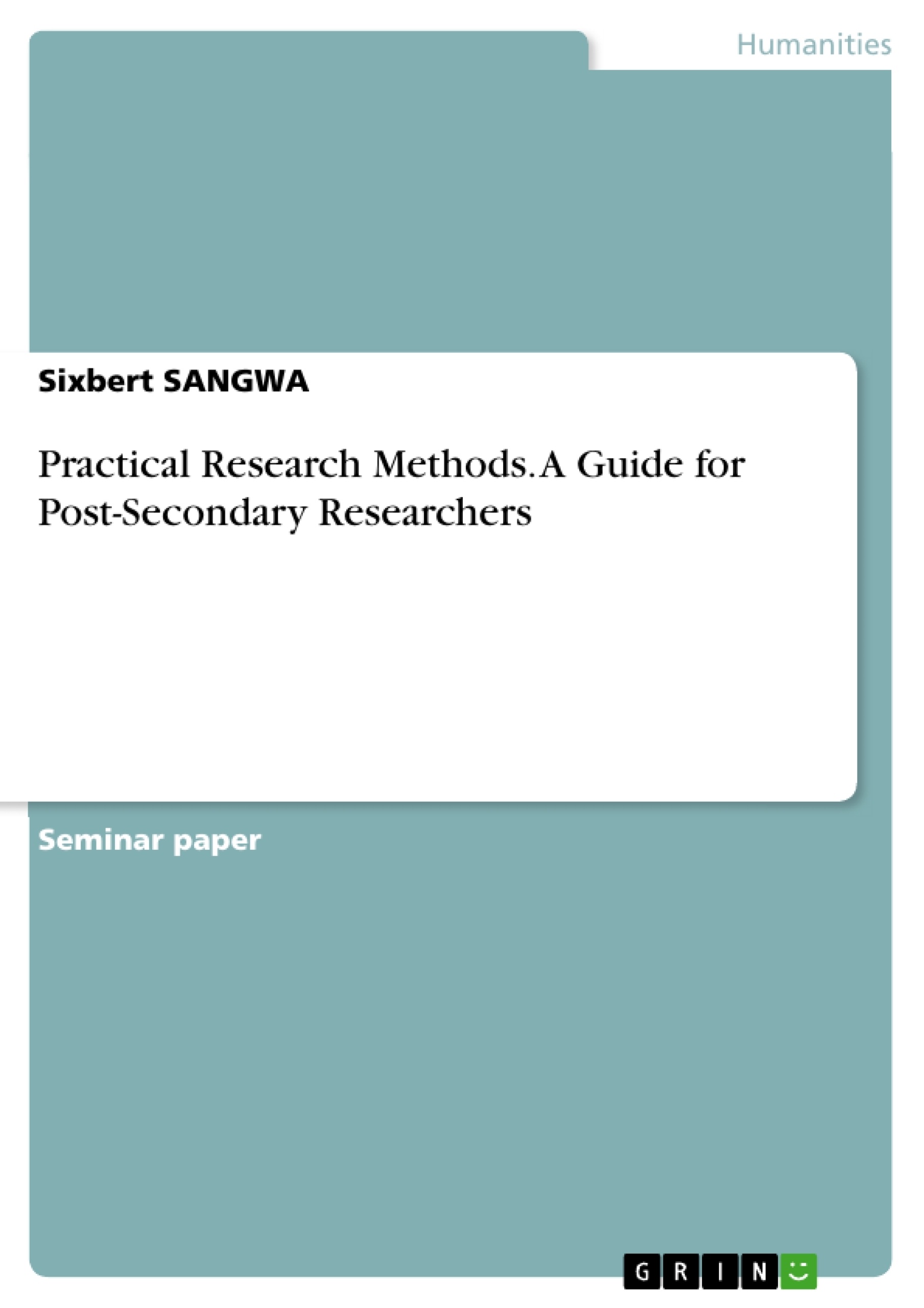Business research can influence any part of the business, including marketing, operations, finance, and so on. It is therefore of great interest to corporations, public sector agencies, consulting firms, research institutes, independent researchers, non-profit organizations and non-governmental organizations.
This document is a comprehensive guide for young researchers wishing to pursue different forms of research. It presents the research, its different forms and its main stages of process. While the second chapter presents a step-by-step procedure for formulating a research problem, the third chapter concerns the review of the literature and its current practices. The document also presents research methodologies and research design, as well as measurement tools. While the seventh chapter is devoted to data management, the last part of this work details the practice of data analysis. In its most basic form, research involves collecting, analyzing and interpreting information to answer questions and creating a report summarizing some readily available data.
Contents
1. INTRODUCTION TO RESEARCH
1.1. Definition
1.2. Research: Process
1.3. Difference between research and non-research activity
1.4. Characteristics of Research
1.5. Objectives of Research
1.6. Motivation in Research
1.7. Types of Research
1.7.1. Application of research study
B. Applied research
1.7.2. Viewpoint of objectives
1.7.3. Inquiry Mode
1.8. The Research Process
2. FORMULATING THE RESEARCH PROBLEM
2.1. Sources of research problems
2.2. Aspects of research study
2.3. Considerations in Selecting a Research Problem
2.4. Steps in Formulation of a Research Problem
3. REVIEWING THE LITERATURE
3.1. Overall Strategy
3.2. Types of Literature Review
3.3. Critical Evaluation
3.4. Thematic Structure
3.5. Common problems to avoid
4. METHODOLOGY AND ANALYTICAL FRAMEWORK
5. RESEARCH DESIGN
6. DESIGNING MEASUREMENT TOOLS
6.1. Designing a questionnaire
6.2. Testing the tools
7. DATA MANAGEMENT
7.1. Data capture
7.2. The tools
7.3. Identifiers
7.4. Data Entry and Validation Schemes
7.5. Adding Comments to Cells
7.6. Saving and Protecting Files
7.7. Data Archiving
7.8. Backups
7.9. Storage and access
7.10. Data ownership
7.11. Data Management Strategy
8. DATA ANALYSIS
8.1. Analysis Objectives
8.2. Data analysis
8.2.1. Exploring and describing the data
8.2.2. Confirmatory Analysis
8.3. Regression
REFERENCES



